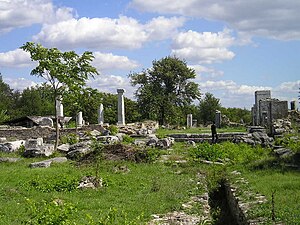Battle_of_Nicopolis_ad_Istrum
Battle of Nicopolis ad Istrum
Battle between Roman and Gothic forces (250)
The Battle of Nicopolis ad Istrum was fought between the Roman army of Emperor Decius and his son Herennius Etruscus, and the Gothic army of King Cniva, in 250 AD. The Romans were victorious.
This article has multiple issues. Please help improve it or discuss these issues on the talk page. (Learn how and when to remove these template messages)
|
